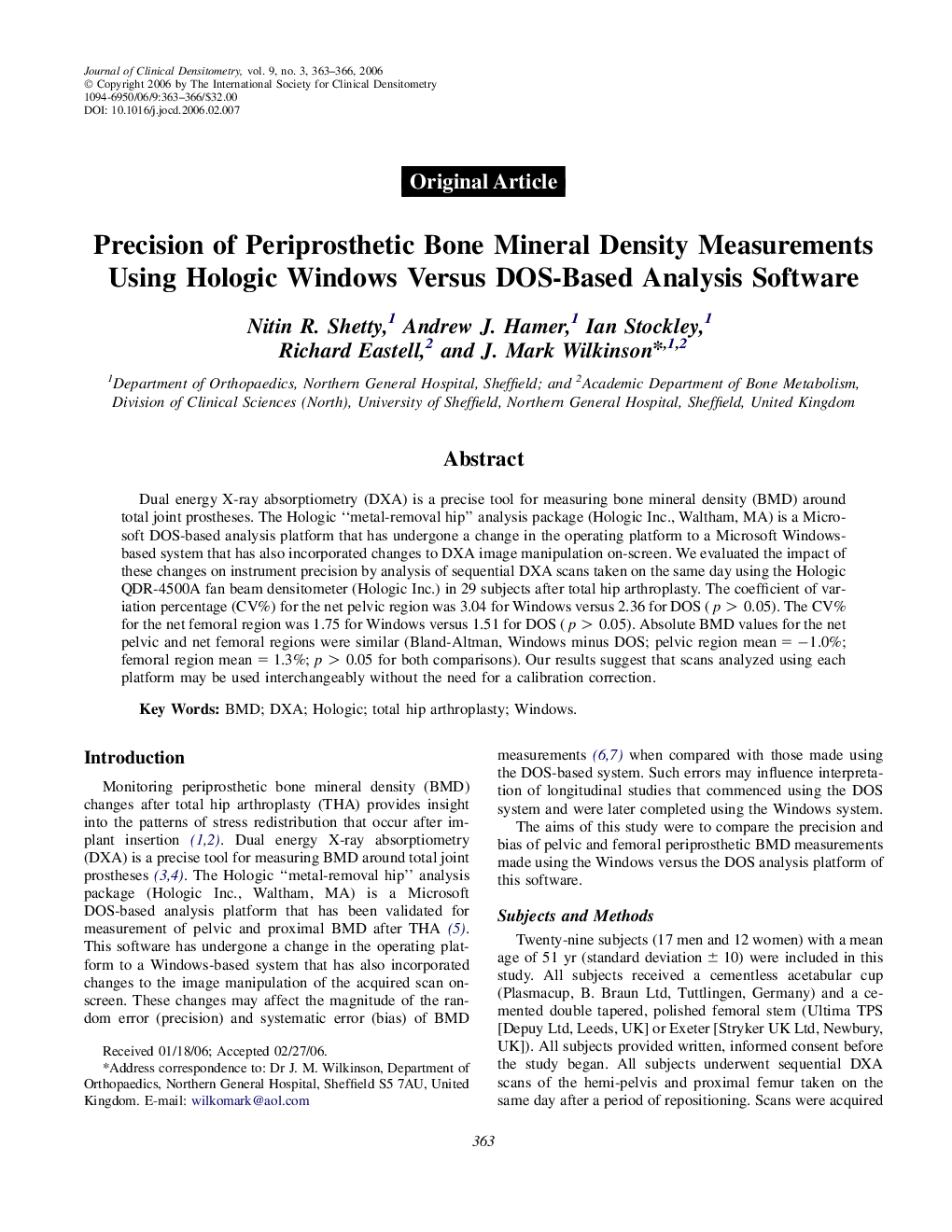| Article ID | Journal | Published Year | Pages | File Type |
|---|---|---|---|---|
| 3271837 | Journal of Clinical Densitometry | 2006 | 4 Pages |
Abstract
Dual energy X-ray absorptiometry (DXA) is a precise tool for measuring bone mineral density (BMD) around total joint prostheses. The Hologic “metal-removal hip” analysis package (Hologic Inc., Waltham, MA) is a Microsoft DOS-based analysis platform that has undergone a change in the operating platform to a Microsoft Windows-based system that has also incorporated changes to DXA image manipulation on-screen. We evaluated the impact of these changes on instrument precision by analysis of sequential DXA scans taken on the same day using the Hologic QDR-4500A fan beam densitometer (Hologic Inc.) in 29 subjects after total hip arthroplasty. The coefficient of variation percentage (CV%) for the net pelvic region was 3.04 for Windows versus 2.36 for DOS (p > 0.05). The CV% for the net femoral region was 1.75 for Windows versus 1.51 for DOS (p > 0.05). Absolute BMD values for the net pelvic and net femoral regions were similar (Bland-Altman, Windows minus DOS; pelvic region mean = â 1.0%; femoral region mean = 1.3%; p > 0.05 for both comparisons). Our results suggest that scans analyzed using each platform may be used interchangeably without the need for a calibration correction.
Related Topics
Health Sciences
Medicine and Dentistry
Endocrinology, Diabetes and Metabolism
Authors
Nitin R. Shetty, Andrew J. Hamer, Ian Stockley, Richard Eastell, J. Mark Wilkinson,
